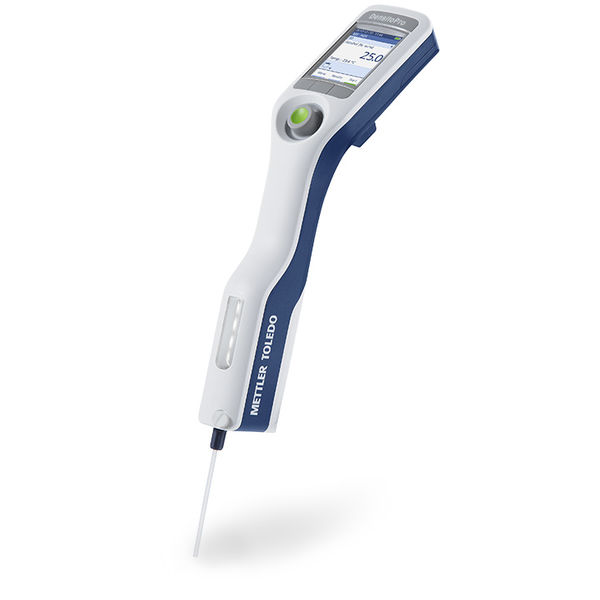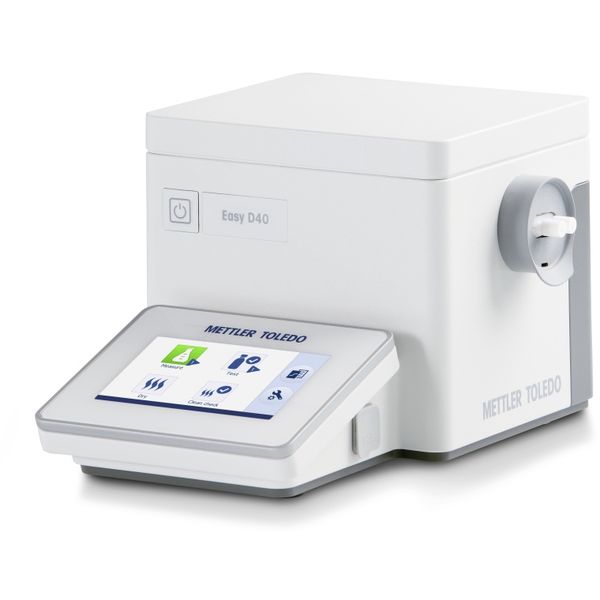
Density Meter
Benchtop and Portable Digital Densimeter
A density meter, also known as densimeter or specific gravity meter, is an analytical instrument that uses the oscillation of a U-shaped hollow glass tube to measure the density of liquid samples quickly and automatically. The measured density can then be automatically converted into other units and concentrations for specific applications, as specific gravity, API, alcohol%, Brix and many more. Choose your density meter from the lightest portable option to the most accurate benchtop model.
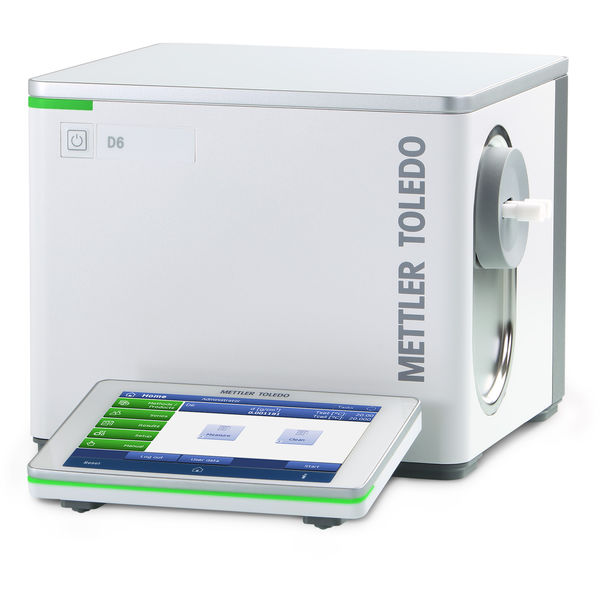
Density meter Excellence D6
Accurate, intuitive, and modular, the Excellence D6 offers fast measurements with automatic temperature control, a real-time video view of the measuring cell and automatic viscosity correction. Everything via an incredibly easy-to-use user interface.
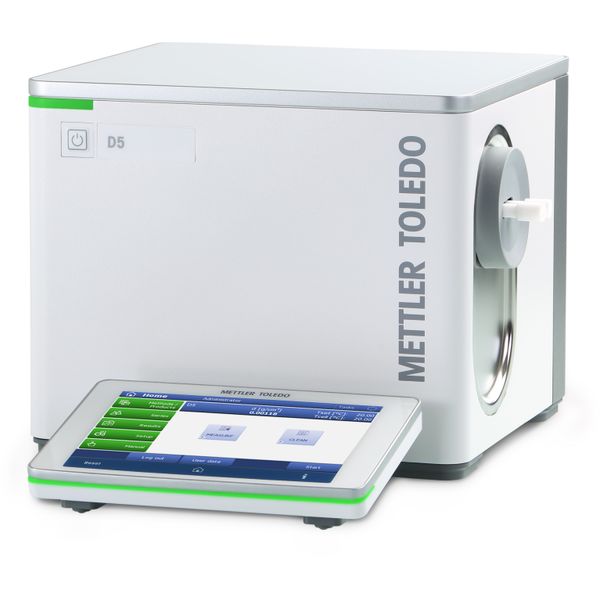
Density meter Excellence D5
Accurate, intuitive, and modular, the Excellence D5 offers fast measurements with automatic temperature control, a real-time video view of the measuring cell and automatic viscosity correction. Everything via an incredibly easy-to-use user interface.
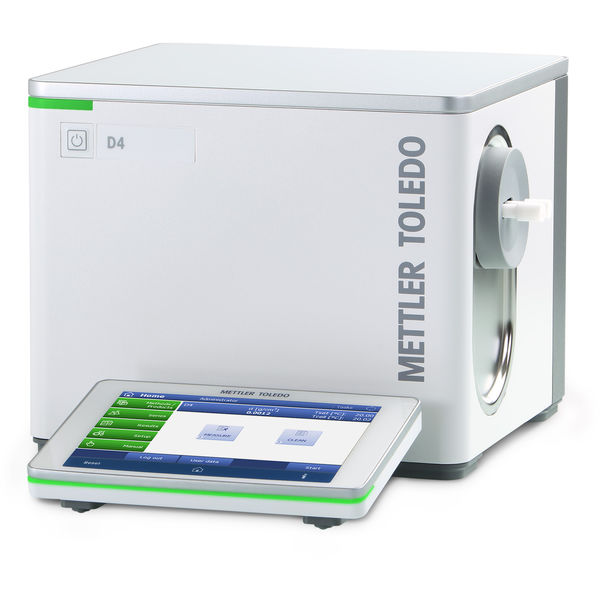
Density meter Excellence D4
Accurate, intuitive, and modular, the Excellence D4 offers fast measurements with automatic temperature control, a real-time video view of the measuring cell and automatic viscosity correction. Everything via an incredibly easy-to-use user interface.
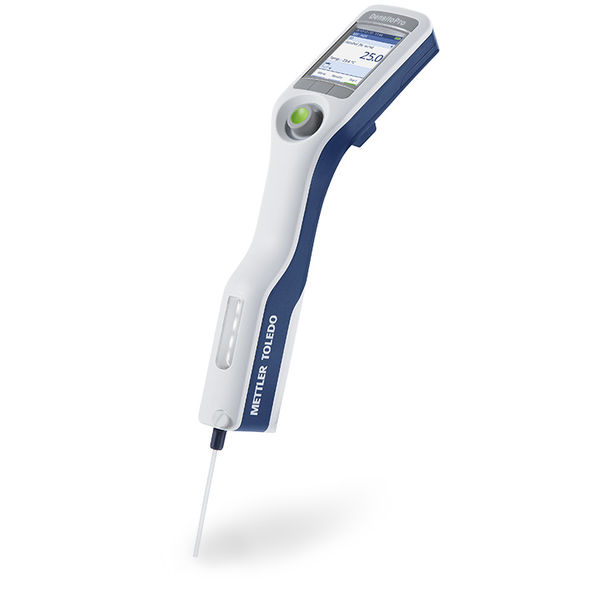
Handheld Density Meter DensitoPro
Made for use in the lab and on-the-go, the DensitoPro is perfect for all kinds of applications, from quality control of incoming goods to at-line quality assurance. With the built-in RFID and barcode scanner, full sample identification is performed automatically.
Advantages of METTLER TOLEDO’s Density Meters / Specific Gravity Meters
Unlock Service Excellence - Maximize Your Efficiency
Unlock Service Excellence - Maximize Your Efficiency
Explore Our Services - Tailored to Fit Your Equipment
Uptime. Support & Repair
Performance. Maintenance & Optimization
Compliance. Calibration & Quality
Expertise. Training & Consulting
FAQs
What is density?
Density is the mass of a sample or body divided by its volume.
D = mass/volume (g/cm3, or kg/m3, or lb/ft3)
What is the difference between manual and digital density measurement?
Manual measurements with a hydrometer or pycnometer are operator-dependent and therefore can lead to error-prone results. Digital density meters use the oscillation of a U-shaped glass tube (U-tube) filled with the sample to determine the density with very high accuracy (up to 0.000005 g/m3) and repeatability (up to 0.000001 g/m3).In Addition, benchtop density meters have built-in Peltier temperature control, allowing temperature measuring ranges from up to 0 to 90 °C.
How to improve the workflow of density analysis?
Automate the sampling, draining, rinsing, and drying in your workflow, to save operators time and increase repeatability and reliability. Use sample changers to run series of samples unattended. In addition, barcode readers and PC software open the way to digital data management up to seamless integration into your LIMS, ERP or SAP.
Can other analyses be run automatically together with density?
Yes. Often the refractive index is measured together with the density. This can be run simultaneously with a multiparameter system, combining a density meter and a refractometer (and an autosampler for further automation). Further analysis of pH, conductivity, and color can be performed by adding corresponding instruments to the multiparameter system.
